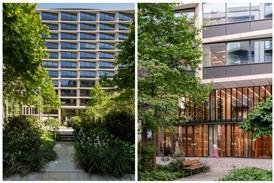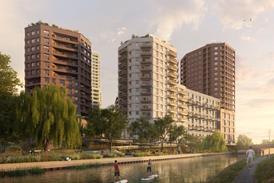As series of spectacular pavilions is taking shape in Shanghai for the 2010 expo, and Thomas Heatherwick’s design for the UK is no exception, but what message is it sending out?
Even if you take the view that Expos are a waste of money and of no intellectual value, they remain hugely popular as nation-branding exercises.
Britain, which is spending £25 million on its Shanghai pavilion, is not the only country which hopes that jaw-dropping architecture and VIP rooms will tempt Chinese investors and help UK exporters strike up new contacts.
Yet the government’s decision to embrace this Expo with uncharacteristic largesse — the last British pavilion for Japan’s Aichi Expo in 2005 cost a mere £3.3 million — is because this is China.
Not only are there the trade deals that might result, the government wants to correct the image conveyed at the 2008 Beijing Olympics that we are a country of Beefeaters and red buses.

And for the Chinese hosts, this vast Expo is another demonstration that it’s open for business. Despite a worldwide recession, it is spending £35 billion — more than twice the cost of the Beijing Olympics — on the six-month event, which will include almost 250 pavilions, and is expected to draw up to 70 million visitors.
Expos are seen as good laboratories for experimenting with architecture and technology. Many of the pavilions feature smart materials, while Thomas Heatherwick’s design has gone in the opposite direction, using natural light to illuminate the building during the day.
While he will compete against Foster’s UAE pavilion and EMBT designing Spain’s, few disagree that Heatherwick’s pavilion, described as like a giant dandelion about to lose its seeds to the wind, will be the most spectacular.
But Peter Higgins of Land Design Studios, who has been to the last eight Expos and designed the British pavilion for Aichi, questions its value. “The UK pavilion will be spectacular and will be a photo opportunity to die for,” he says, “but will there be a return on this huge investment?”

He makes the point too, that Britain has upped its budget considerably since the competition in 2007. He says the government was “naive” to expect that it could build Heatherwick’s pavilion for the original £10 million budget, and questions whether it fulfills the overarching brief for Shanghai, which is Better Life, Better City.
“Expos are like experimental cities and so the buildings should also be experimental — by that I mean they should demonstrate sustainability. At the very least, we should be able to flat pack them so they can go somewhere else.”
Alas, this won’t be possible. “The structure won’t really allow it to be brought back to the UK so we are recycling the materials that we can,” says the Foreign Office. But it seems the only part that can be recycled is the 60,000 acrylic spikes which will be distributed to schools across China.
As Higgins says: “Britain has built a beautiful sculptural piece but if it can’t be recycled what is the message?”




Postscript
Sources: Spanish pavilion: Philippe Lopez/AFP/Getty Images; all others: Schifres Lucas/ABACA/Press Association and China Foto Press/PA.
















No comments yet